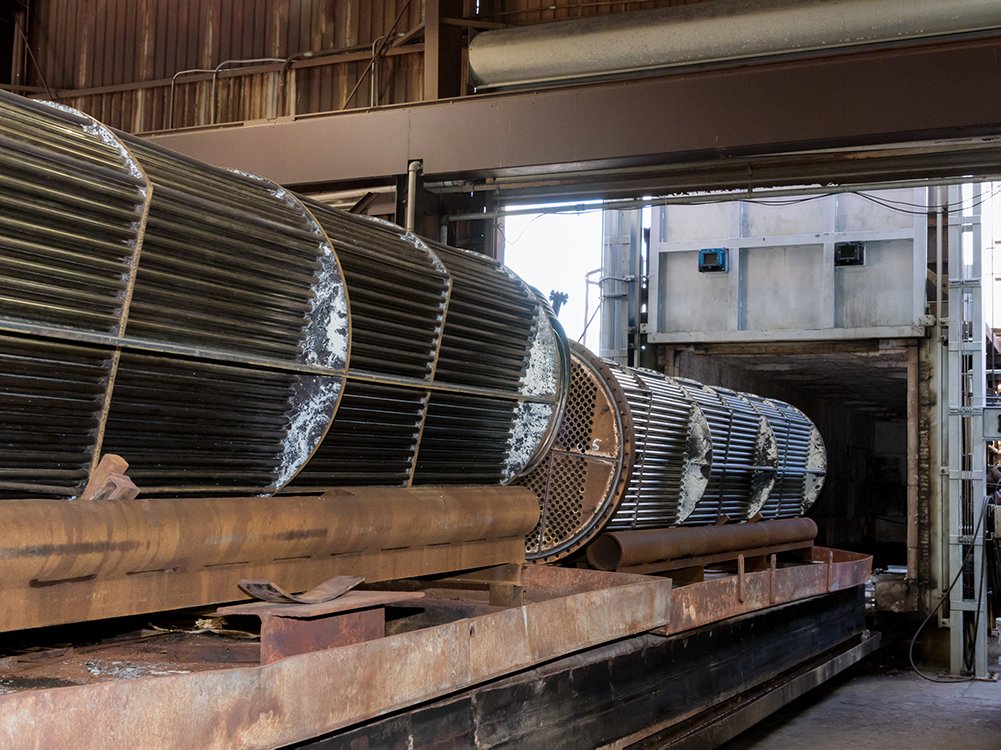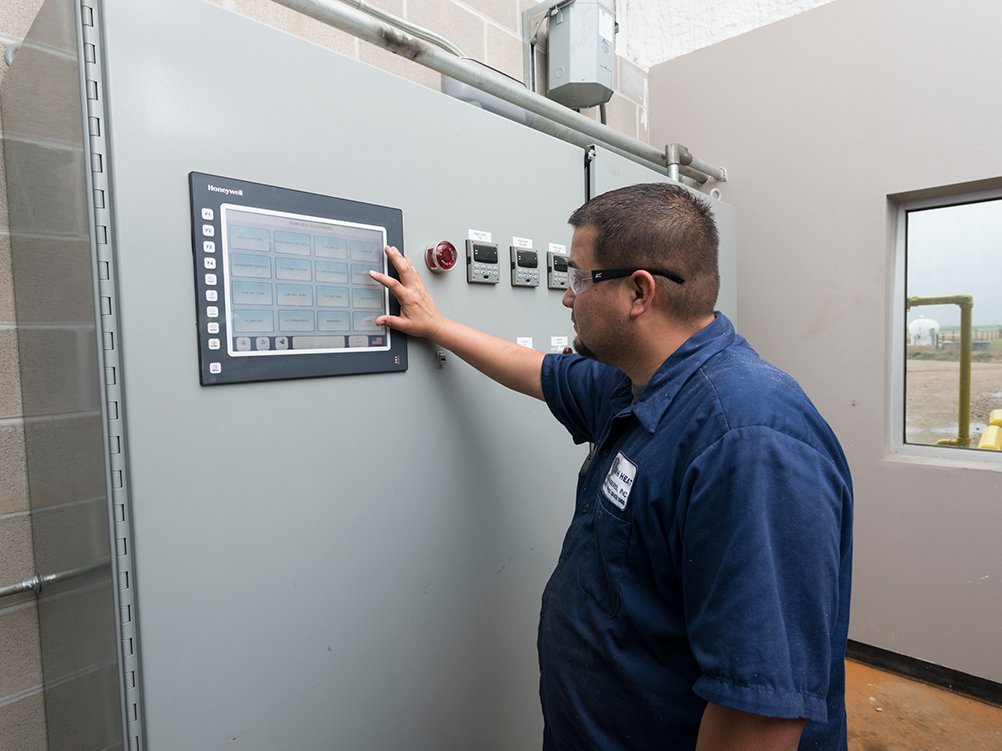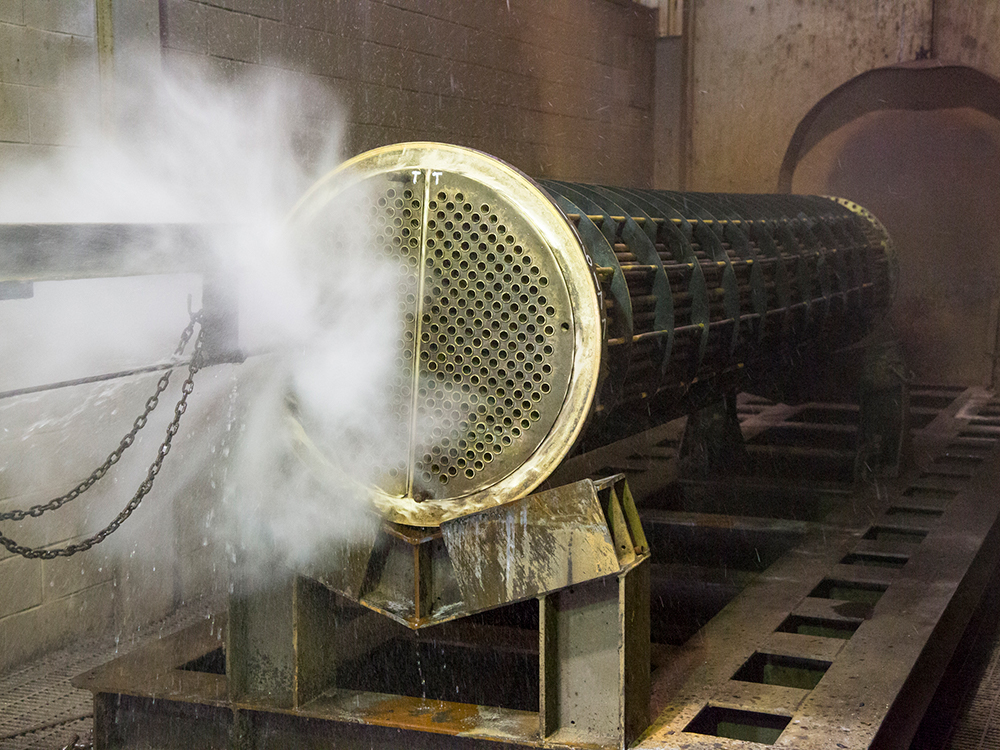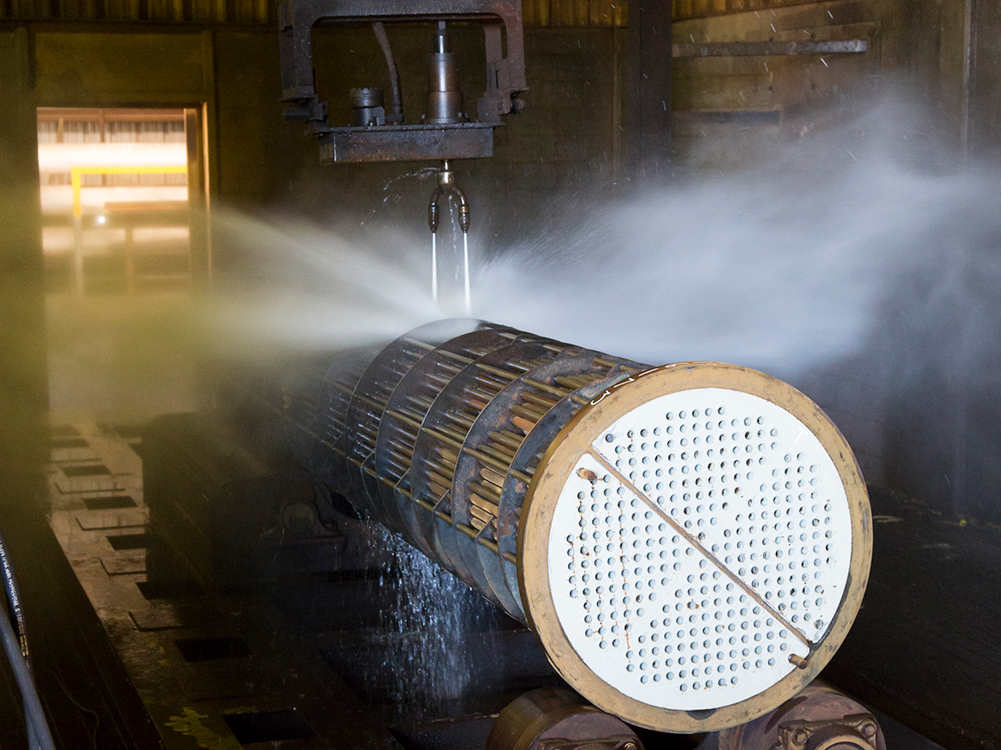
Thermal Decomposition: A Technique for Cleaning Process Equipment

Introduction
Cleaning of heat exchangers, filter pots, extruders, and other types of process equipment is typically done through mechanical means with the use of pressurized water (e.g., hydro-lancing, hydro-blasting). However, there are situations in which a process known as pyrolysis, or thermal decomposition, a technique that utilizes heat rather than water to break down foulants, might be more effective than these traditional cleaning methods. While this is not a replacement for the use of mechanical processes, it can be a good solution in cases of problematic hydrocarbon fouling when conventional techniques are no longer feasible.
"Thermal decomposition provides an excellent alternative to traditional cleaning methods, especially for heavily fouled process equipment with foulants such as polymers, styrenes, heavy crudes, tar, and coatings."

Cleaning Hydrocarbon Fouling With Heat
There are two basic types of heat application to treat hydrocarbon fouling:
- 1. Thermal decomposition in an oxygenated environment
- 2. Heat soaking in the absence of oxygen
Thermal Decomposition
Thermal decomposition applies heat by use of fire, or thermal oxidation, in a gas fired oven that brings the process equipment to a specified temperature at a given rate, usually dictated by the customer. This process must be carefully monitored by the use of thermo-couples, which essentially act as a sophisticated thermostat, to ensure even heating. Controlled heating is critical, as inconsistencies could lead to distortion of the equipment.
Thermal decomposition in this particular context occurs through controlled oxidation. The foulants are chemically converted into other materials, such as CO2 and H2O. Once the equipment reaches its specified temperature, some hydrocarbons will reach vaporization and break down to provide the fuel for decomposition. The remaining hydrocarbons will then pass through a thermal oxidizer, operating at over 1000 F°, until the residual gasses have been converted to water and carbon dioxide. This exhaust stream then passes through a steam scrubber to trap residual ash and any other inorganic materials.
Any foreign material captured during the steam scrubber phase goes to plant waste treatment for final remediation. This entire process can last from one day to several weeks, depending on the size of the process equipment involved, the fouling material, and protocols demanded by the customer. Furthermore, one can place a nitrogen or carbon dioxide charge on the tube side of a heat exchanger to allow more control over temperature differentials and/or eliminate any possibility of oxidation of critical surfaces.
Heat Soaking
Heat soaking is another technique used to treat hydrocarbon fouling. This method occurs in the absence of oxygen, applying radiant heat until the fouling material simply melts off the process equipment and is collected at the bottom of the oven. Ideal candidates for this technique are typically smaller pieces of process equipment, such as strainers or metallic filters, where this application of heat is just enough to get the polymers to melt out into catch pans.
This process would normally occur with a slight nitrogen charge to ensure that no oxidation or combustion occurs, reducing potential complications. Given that the chemical state of the fouling is not manipulated in this case, the risk of fire is eliminated and the environment of the oven remains more consistent and without hot spots. This makes it much easier to maintain oven temperatures within the predetermined range, limiting the risk of heat-related distortion.
Material Recovery Through Thermal Decomposition
Thermal decomposition can be used to clean the scrap material before recycling. Since any heat-related damages to the equipment would be irrelevant in these cases, oven times are quicker and there is no need for closely monitored thermo-couples.
Any residual ash left from thermal decomposition and waste water from oven seals and steam scrubber drain lines must be properly disposed of. It is recommended that all wet waste generated pass through a multi-stage bio-remediation process before final disposal. Moreover, all ash generated should be landfilled in an appropriate manner as dictated by state and federal governing bodies.
Conclusion
In closing, thermal decomposition provides an excellent alternative to traditional cleaning methods, especially for heavily fouled process equipment with foulants such as polymers, styrenes, heavy crudes, tar, and coatings. In addition, these methods provide a highly effective means to decontaminate metal in preparation of disposal.
This article appeared in the January/February 2018 issue of Inspectioneering Journal
Author

Related Articles
February 25th, 2015
How To Effectively And Efficiently Clean Heat Exchangers, Part I
October 28th, 2015

